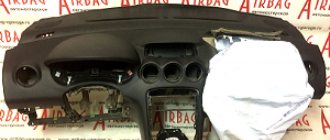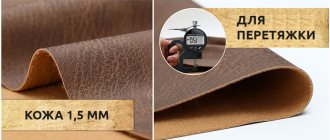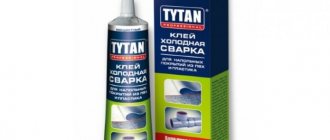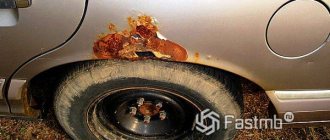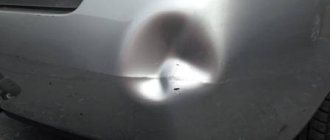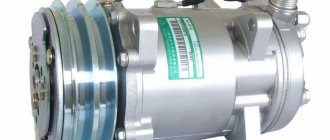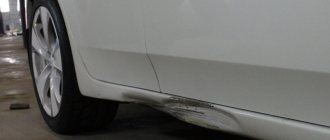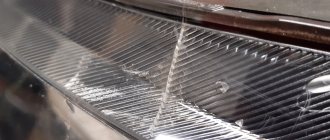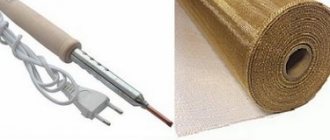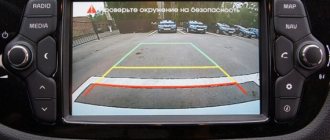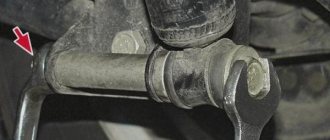And so hello to everyone who reads me. I hope you find my material useful. I will be grateful for reposts, likes and other encouragements; the more movement there is in the topic, the more interest I have in sharing with you.
And so today we will talk about repairing torn, worn out, burst seats. In a large number of modern cars, the manufacturer uses a combination of leather with zama leather for sewing seats; of course, leather lasts longer than zama leather, but zama leather also gives good performance if it is handled with care and precision.
What most often causes deputy skin to suffer from, oddly enough, is not from friction; the worst thing for deputy skin is scratches, for example from rivets on jeans. Leather is inherently a durable material until its surface is damaged by a scratch, which subsequently spreads and a hole appears and a terrible appearance.
Here is our example for today from this series, a man approached me with a 2006 Nissan Maxima QX, its interior is sewn in a combination of leather and leather, the central part of the seats is made of leather, the side part of leather is made of leather. Over time, due to external damage to the leather, the deputy was pretty worn out.
Of course, for a car of this class, the appearance of the seats is simply unacceptable and in some way a shame on the owner of the car, but in our case, the person received the car with such damage. Well, in general, how do we solve this problem? Go.
Of course, the first thing we do is remove the seat from the car, carefully, in this case a seat with electric drives, heating and other stuffing. It weighed 25-30 kilograms, so it’s better if someone helps so as not to break your back.
After removal, carefully remove all handles, hooks, buttons, and levers from the seat. On each car model, all this is attached differently, but in most cases it simply snaps onto antennae or retaining rings. Now that you have removed everything that is unnecessary hanging on the seat, you need to carefully remove the upholstery from the seat, this is, in principle, an intuitive process, so I see no point in describing how to remove the material.
When everything has already been removed, we take a special knife for ripping seams, it is sold in any thread or fabric store. Using this knife, we carefully cut along the seam around the worn parts of the seat, as if cutting them out in their original form. Since our replacement material is not exactly 100% the same as the base of the seat, we will have to cut out the same pieces on both sides for symmetry, so that in the end everything will look like it came from the factory.
We put the cut pieces, in the future we will call them patterns, on our new fabric, and trace them 1 in 1, as if making a new pattern according to the pattern. Then everything is done in the reverse order, we sew the newly made pattern into its place as it was before us, according to the markings, and stitch it in the same places where we ripped the threads, so as not to leave extra holes in those parts of the seat that we did not change. Please pay attention that our pieces that we replaced ended up on the part of the seat in which the decorative stitching was sewn, therefore we had to set the correct needle pitch so that when re-stitching the decorative stitching in a circle, the needle would fall into the same holes. If done incorrectly, there will be holes all around in the seat from the old seams. In general, we managed to make the new line lightly on top of the old one in the same holes, that’s what we came up with.
Once you have completed all the stitching and sewn all the parts, you can safely assemble the seat in the reverse order and install it back in the car. Then we enjoy the result.
If you have any questions or need help with alterations or materials, please contact us, write in a personal message or in the comments below. I'll be glad to help.
An article about repairing car seats: main types of damage, tools and materials, work procedure. At the end of the article there is a video about painting and restoring car seats.
When to think about repairs
The reasons for car seat repair can vary. Restoration may be required after an accident, or the upholstery of the chair will simply tear or become too worn over time.
As soon as sitting in your car becomes uncomfortable, it's time to get ready for seat repairs.
One should not discount the fact that driving in a damaged seat can not only cause unwanted stress on the lower back and spine, but also lead to an accident if the driver, instead of watching the road, pays too much attention to trying to get more comfortable in the seat.
Useful tips
It is difficult to put the upholstery on the back. In order not to waste a lot of effort and time, it is turned to the left side. Place it on the top of the seat and gradually unfold it. In order for leather upholstery to sit well on the base, it is treated with hot air.
Under the influence of heat, the leather softens, easily stretches, cools, contracts, and tightly fits the seat. A hairdryer is used for heating; the temperature is adjusted by distance. They don’t stay in one place for long.
It is better to do seat restoration on a flat surface. The work table must be large to lay out the material. Sewing on a sewing machine is the most difficult part when reupholstering a car seat.
An article about repairing car seats: main types of damage, tools and materials, work procedure. At the end of the article there is a video about painting and restoring car seats.
As a result of prolonged use of a passenger car, not only the physical condition of the engine, wheels and body deteriorates - the interior and seat upholstery of the car also do not improve over time. Torn upholstery or abrasion of a car seat means a reduced feeling of comfort for the driver and passengers in the cabin, and also, in some cases, a certain risk when driving. Is it possible to handle car seat repairs yourself?
Main types of damage and defects
The most common types of damage to car seats include:
- shabby condition of the upholstery, usually the armrests;
- failures in the base of the structure;
- deformation of the internal seat springs;
- the cushion gasket is sagging;
- the casing is cracking;
- mechanical damage, ruptures, cuts, burns, other results of careless handling;
- damage resulting from the deployment of airbags or seat belt pretensioners.
What repairs should be made depends on what damage needs to be repaired. The necessary tools, as well as materials for repairs, are selected accordingly.
Is it possible to restore leather car seats?
To restore leather car seats, you can use special repair compounds. They fill tears and defects. As a result, not only the holes are sealed, but also the texture of the skin is restored.
To get this effect:
- You first need to apply a special liquid to the entire part of the seat, which, after drying, repeats the texture of the leather upholstery.
- After this, the resulting patch is carefully removed and placed on the damage point previously filled with polymer mass.
- At the very last stage, an iron is used to iron the repair area through a special Teflon pad.
Thus, by adhering to proven technologies and using high-quality repair compounds and materials, you can quite successfully repair seats on your own.
Necessary tools and materials for replacing upholstery and filling
The seat upholstery in the cabin can be made of fabric, Alcantara (an artificial material similar to suede) or leatherette. Working with leather upholstery will be described below.
In addition to new upholstery material and lining foam, you may need:
- chalk or marker for cutting;
- assembly (stationery) knife, sharp scissors;
- a set of needles for hand sewing;
- awl;
- a spool of strong silk (“parachute”) threads;
- pliers;
- screwdrivers;
- portable (car) vacuum cleaner;
- hacksaw;
- hammer;
- glue gun
When selecting a new material for upholstery, a very important role is played by the competent selection of shade, as well as strict adherence to the direction of the pile for fleecy fabrics when cutting.
Work order
Let's consider the most complete cycle of work necessary to restore a damaged chair. If we are talking about minor cosmetic repairs of cracked or torn upholstery, complete dismantling of the chair should not be carried out.
Removing and disassembling the seat
The seat should be removed from the interior and completely disassembled.
It is most convenient to do the work on a table, so that you can lay out all the parts and not get confused later during assembly.
The ultimate goal of disassembling a chair is to remove the cushion and back from the frame. First, all external fastenings are removed, and then the upholstery is removed.
The upholstery is removed using sharp scissors or a utility knife, which is used to rip the seams. When removing the upholstery, remember that in some places it may be glued, so you should remove it carefully. The glued areas can be soaked using solvent or regular gasoline.
When dismantling, it is better to sign the disassembled parts so that there are no hiccups or errors during the assembly of the chair after the repair is completed.
Cutting new parts
In order to cut new parts from stored fabric, it is convenient to use old parts from the removed trim. They need to be placed on top of the fabric prepared for cutting and outlined as accurately as possible with a thin chalk or marker line. At this stage, the accuracy of the lines is most important, as well as the coincidence of the pile directions of the new and old parts.
Tkanoff › Blog › Repairing car seat foam: features and nuances
Today we will tell you how to restore foam rubber with your own hands, share the experience of our craftsmen and offer the optimal course of work in which you will spend less effort and money.
If you are ready, then it’s time to prepare the necessary materials and tools. For this you will need: Secondary foam rubber (PVF). In the Eco-leather online store ecokoja.ru/soputstvuiushchie-tovary/porolon/ you can choose the material of the desired thickness and density.
When everything you need is at hand, you can get to work.
Restoration of foam rubber
To begin, remove the seat from the car interior, disassemble it, remove the cushion, unscrew all the screws and fasteners and disconnect the side plastic panels. Remove the upholstery from the chair and carefully examine the condition of the foam. If it is very worn, then it is better to completely replace it, and if the damage is small, for example, there are several holes, then they can be repaired.
Carefully cut the damaged area almost down to the metal. Cut a piece of new foam and apply it to the area being repaired. It should fit snugly, trim it if necessary. Glue a piece of foam rubber following the instructions for the selected adhesive. Usually the adhesive is applied in several layers, because PPU absorbs well. 3 layers are enough.
Restore all areas in this way. Heavily dented sidewalls can be extended. To do this, glue a sheet of PVV onto them and give them the desired shape: cut off the excess, sand the sharp edges and rough areas with sandpaper.
After increasing the side support, the factory upholstery may not fit, so it may have to be replaced. To do this, split the old one and use the resulting parts to create new ones. Don't forget to add a few centimeters if necessary. Sew all the pieces together: first the center, then the sides. Before stitching the sides to the center, sew a decorative stitch on them.
At the end of the work, put on new upholstery and assemble the entire structure. It will be much more comfortable to sit on a repaired chair, and it will last for many more years.
Source
Restoring cuts on leather seats
If the seats in the car are leather, repairing them can also be done without resorting to expensive workshop services.
Leather chairs are perfectly preserved during temperature changes and high humidity.
, with good care they last a long time, but they have, perhaps, only one significant drawback - they develop tears and cracks when exposed to direct sunlight.
Considering the high cost of the material, complete replacement of the covers in this case is impractical, but the resulting gaps can be patched.
Repairs may require:
- “liquid skin” composition;
- paint matching the tone of the chair upholstery;
- degreaser;
- plastic mesh for patching small holes and cracks;
- thermal powder;
- fine sandpaper;
- small iron.
Procedure:
- Align the edges of the hole to remove any defects around the perimeter.
- Degrease the surface, including intact upholstery leather.
- Sand the edges of the hole with fine sandpaper.
- Cut it out of plastic mesh and install a patch of the required size, 1-1.5 cm larger than the hole.
- Apply thermal powder to the mesh and heat the surface with an iron.
- Level the surface with sandpaper.
- Apply several layers of liquid leather to the mesh, each time waiting until it dries completely.
Before starting restoration work, it is better to practice on an old piece of leather, for example, an old leather jacket. If you need to patch several cuts, you should start with those that are minimally noticeable, and then move on to the rest.
Car seat restoration
The easiest way to restore a car seat is when the upholstery is in good condition and the foam has only minor cracks. In this case, it is enough just to fill these voids, and the chair will become like new again.
To breathe a second life into a car seat, you need to:
- Smooth out the edges of the cracks using a utility knife.
- Take a new piece of foam rubber that matches the shape and size of the crack.
- Apply spray adhesive to the crack walls and fill it with a piece of prepared foam rubber.
- Leave the product to dry.
- After complete drying, use a knife and sandpaper to remove any uneven surfaces.
- Cover the repaired area with another layer of foam rubber 5 mm thick.
In order for the interior of your car to always look neat and well-groomed, you should regularly monitor the cleanliness and integrity of the upholstery and internal filling of the seats. So, if you notice a defect in a timely manner and immediately eliminate it, you can get away with minimal financial costs. Otherwise, you will have to put in a lot of effort, time and spend a lot on consumables.
Repair of covers with heating system
If the heating system built into the seat cover has become unusable, you can also fix it yourself.
The first thing to do is to use a tester to accurately localize the location of the wire break.
Next, you should connect the broken wires and use a tester to check whether the pulse passes through. The corrected cover is installed back on the seat and the functionality of the system is checked.
In order to restore a presentable appearance to the seats in the car, you need patience and accuracy. In this case, it is quite possible to do without large expenses in a car repair shop.
Video about painting and restoring car seats:
It is quite possible to repair worn or damaged car seat upholstery yourself, since this does not require expensive special tools, but only patience, accuracy and skillful hands. The complexity of the repair depends on the degree of damage, the material of the covering (leather seats are more difficult to restore than fabric ones), and also on whether it is necessary to dismantle the seat.
Restoring leather on car seats with your own hands: is it real?
Restoring leather on car seats with your own hands
How to restore leather on car seats, is it really possible to do this? If the car is used actively, then natural wear and tear on the seats is inevitable. People moving on the seats causes abrasion, which gradually leads to the formation of abrasions in areas most susceptible to friction.
Leather (natural, artificial - leatherette) is quite elastic, does not have the most durable structure, and is prone to stretching. In some areas, the leather upholstery of car seats becomes stretched, and as a result, over time, first small cracks appear there, and then deeper and larger ones.
If the car is used not only regularly or constantly, but also carelessly, then damage is inevitable. These are cuts, torn areas, burn marks, torn seams.
Is it possible to restore leather car seats with your own efforts, with your own hands? Yes, there are a variety of tools with accessories for restoration at home without equipment. If previously restoration was carried out exclusively in car repair shops, today, if you have the materials, tools, knowledge and some skills, it is possible to restore the interior yourself.
When do you need car seat repairs?
The question of repairing seat upholstery arises when the driver or passengers feel discomfort during a trip because the seat is dented or deformed.
Another reason is abrasion of the upholstery material, damage, irremovable stains, burns. All this gives the car interior a sloppy look and irritates the car owner.
Most often, the driver's seat needs repairs, since it is exposed to the most use. However, passenger seats can also suffer from careless handling by passengers, transportation of animals, heavy objects, or road accidents.
We restore car seats with our own hands
Long-term intensive use of a car inevitably affects its power, efficiency, and the condition of the body and interior.
Often, after some time, owners have to update the upholstery, change the internal seat padding, and restore the seat reclining mechanism. This reduces discomfort and increases the level of safety for the driver and passengers. The comfort and convenience of the interior depend on the quality of the work performed and the materials used.
Material and tools
The material for the covering is selected at the request of the car owner. It can be natural or artificial leather, fabric, Alcantara.
Genuine leather is the most expensive material. Leather has high strength and fire resistance. There are high-quality substitutes for genuine leather that are cheaper: eco-leather, Alcantara.
Eco-leather is made from cotton, leather, artificial polymers, and looks and feels no different from leather. It is durable, elastic, and has a choice of different colors, patterns, and textures. Alcantara is a fleecy material similar to suede.
Depending on the complexity of the work, you will need the following tools:
- needle and thread;
- chalk or pencil for marking;
- scotch;
- scissors;
- glue;
- paper for patterns;
- fabric-based foam rubber;
- pliers, screwdrivers, hammer.
To eliminate defects on leather seats, you will need a special kit of products.
Step-by-step instruction
If upholstery repair involves its complete or partial replacement, then the stages of work will be as follows:
- remove the seats;
- disassemble each chair into its component parts, labeling each part;
- remove the old upholstery and undo the seams;
- attach the parts of the old upholstery to paper and draw patterns;
- on the drawings, mark the places where the upholstery is fixed on the seats;
- cut out the details of the new skin according to the drawings, transferring all the marks to the material;
- sew parts;
- pull the finished covers onto the parts, fasten them with a needle or glue;
- assemble the chairs by connecting the cushions to the backrests.
Do-it-yourself car seat reupholstery
Deformation of the gasket, anatomical filler, and worn upholstery force the seat cushions to be repaired. Timely reupholstery will preserve the aesthetics of the interior, the health of the driver and passengers. Long trips in an uncomfortable seat cause pain in the back and muscles.
Tools and materials
Repairing a car seat requires tools and materials. Most often they change the upholstery with their own hands; in their work they use:
BF-88 glue is suitable for foam rubber.
Upholstery fabric is chosen according to your taste. In terms of color and texture, it should fit into the interior of the car.
| Upholstery material | pros | Minuses |
Elastic, stain-resistant, easy to clean
Special care products are required, cold in winter, hot in hot weather
Eco-friendly, inexpensive, easy to clean
Artificial suede (Alcantara)
Resistant to abrasion, stains, UV rays
When sewing, it is necessary to control the direction of the pile
Fabric (polyester, nylon)
Price, wear resistance, availability
Upholstery replacement
The first step is to remove the old upholstery from the car seat. To do this, it is dismantled. Step-by-step description of the work:
The staples that attach the pillows to the frame are cut off with wire cutters. The mounting locations are marked on the diagram. All stages of disassembly are photographed, this makes it easier to assemble the chair. The upholstery seams are ripped out with scissors or a knife. If the fabric is glued, use gasoline or solvent. Each cut piece is numbered.
How to properly remove the seat
Removal of seats is carried out when completely replacing the old upholstery or its individual parts, as well as for the convenience of eliminating defects.
The general procedure will be as follows:
- move the seats all the way forward;
- unscrew the bolts securing the seats to the floor;
- disconnect the electrical power and heating wires;
- bend the fasteners on the back of the seats.
It should be borne in mind that after turning off the electrical system of the heated seats, the car computer settings will be lost, so you will have to contact the dealership to set it up.
Leather car seat repair
Leather seats are more difficult to repair than fabric seats.
Restoration of small cracks, abrasions, and creases can be done using liquid leather. A special plastic mesh is applied to the damaged area (previously cleaned and sanded), then filled with a product called “liquid skin”. After the product has hardened, you can use the chair.
If the area of the damaged casing is too large, then you will have to replace the entire damaged part by selecting a suitable material.
Repair methods
Simple solutions will help you quickly repair a leather seat or eliminate a defect in another part of a leather interior. The restoration method depends on the problem. Inspect the upholstery in your car and look for any imperfections.
Common problems with leather salon drapery:
- tear along the seam. Seat upholstery that is torn at the seam is sewn up from the inside out. The casing is removed, turned inside out, and torn threads are removed. The connections of the parts are manually sewn with double thread to match the cover, simulating machine stitching, or sewn on a machine;
- abrasions. Abrasion of leather upholstery appears in the third year of intensive use. The solution is to paint it in the same tone or repaint it. Use liquid leather or paint. The processed fragment is degreased, painted, and dried. For restoration, they practice repainting a segment or completely painting the seats and interior. A small defect is covered by spraying aerosol paint;
- Scratches can be removed by filling the leather upholstery with a metal marker. The product fills a microscopic crack and smoothes the surface. Before applying the composition, the surface is degreased;
- holes as a result of careless use in the form of tears, cuts or burns are patched with patches. As a patch, they use leather reserves, cut off a fragment from under the seats, and use leatherette in the same color. The seat cover or upholstery is removed, turned inside out, and the uneven edges are cut off. A larger flap is prepared and glued to the defect area. You can seal the skin from the outside, having previously degreased the surface;
- deep damage is filled with liquid skin. Polymer-based products are selected according to texture and color. The surface of the interior upholstery or seat is degreased, filled with the composition, and dried.
Liquid leather repairs are carried out with preliminary testing. The selected product is dripped onto a piece of upholstery in a closed segment and wait for the polymer to harden. If the color and texture do not differ from the restored finish, restoration is carried out.
Simple methods of repairing a car leather interior will allow the drapery to return freshness, presentability, and cleanliness.
Selection of materials and devices
Before restoring leather upholstery, a material is selected that will match the interior drapery in color and texture. Before restoration, instruments are prepared. The list of devices depends on the repair method and the defect.
A standard car leather repair kit includes:
- liquid skin;
- small scissors;
- tweezers;
- container for preparing a restorative polymer composition;
- dry powder glue;
- leather paint;
- fine mesh or plastic for placing under the patch;
- degreaser;
- sandpaper grit 800-2000.
Repair of fabric seat upholstery
Before starting work, the fabric covering is vacuumed and cleaned of dirt. If there are holes with uneven edges from which threads stick out, then the edges are cut off.
Fabric upholstery can be brought into proper shape using patches. The patch is glued to the damaged area with special glue. The glue is applied to the seat, after first applying the patch and outlining the application area so that the smeared area does not extend beyond the patch.
When the glue dries, iron it through a protective cloth.
Features of local repair of burnt seats
To eliminate burnt holes, there is a special chemical that is sold in car dealerships. It must be selected depending on the color and structure of the upholstery material. The burn is filled with the product, which then hardens. To make the damage site invisible, the top is painted over, covered with gel or fibers similar to pile.
Repairing seat upholstery requires patience, accuracy, and some skills. Therefore, it is necessary to evaluate the complexity of the work, as well as your experience. Simple defects are easy to fix with your own hands.
Do-it-yourself complete replacement of foam rubber in car seats
When there is nothing left to repair, the only correct option is to dismantle the old foam rubber and replace it with a new one. To do this, you will need a material of appropriate structure and density. You can purchase it, as well as upholstery fabric, in the EcoKozha online store https://ecokoja.ru/soputstvuiushchie-tovary/porolon/. And after all the necessary materials have been purchased, you can begin preparatory work and repairs:
Since the sewing process requires special skills, it is better to use the help of a more experienced friend. But in general, there is nothing difficult about how to replace the foam rubber of car seats with your own hands. The main thing is not to be afraid and look for ways to solve the problem.
Added: 07/09/2019 09:48:58
